A complete guide to bass chords – open position and movable chord shapes and how to play them.
Most of the time, bass guitarists stick to playing single-note lines. This 'traditional' approach has evolved for a reason; it's all too easy to overload the low end of a song with a wall of bass sound. Oftentimes a more spartan approach is more effective.
That said, in certain situations playing bass chords will allow you to create new textures and interesting effects. You may want to fill out the bass part of a song, to create an intro, or to achieve a 'bigger' sound if you play in a small group.
Even if you don't actually play bass chords, knowing their shapes can help you write new bass lines. By fingering the chords and playing the notes separately instead of strumming them you can make arpeggiated bass lines. Move the patterns up and down the fretboard to create riffs that could form the basis of a new song.
Knowledge of how chords are formed will also benefit your understanding of music, and improve your songwriting, composition and improvisation.
On this page you'll find a selection of common bass chords that you can learn and use in your own bass parts...
Page Index: Use The Links Below To Jump Straight To The Chord You Need!
- Bass Chords
- Open Position Bass Chords
- Open Position Major Chords For Bass Guitar
- Open Position Minor Chords For Bass Guitar
- Open Position Dominant 7th Chords For Bass Guitar
- Open Position Minor 7th Chords For Bass Guitar
- Movable Bass Chords
- Movable Major Chord Shapes For Bass Guitar
- Movable Minor Chord Shapes For Bass Guitar
- Movable Dominant 7 Shapes For Bass Guitar
- Movable Minor 7 Shapes For Bass Guitar
- Major 7th Chord Shape For Bass Guitar
- Bass Power Chords
- Bass Diminished Chord Shape
- Bass Augmented Chord Shape
- Bass Chord Playing Tips
- Want this information at your fingertips? Check out our printable Bass Scales, Chords & Arpeggios book. Download your copy today!
- If you're unclear on some of the technical terms on this page, take a look at our Guitar Chord Theory pages.
Bass Chords
Open Position Bass Chords
Open position chords are played in the first three or four frets, near the nut (the grooved ridge that separates the fretboard from the headstock).
They are usually easier to play than movable chords (covered further down the page) and the open strings give them a bright, ringing sound.
Try out all of the following chords on your own bass guitar so you can begin to hear the differences between the chords.
Open Position Major Chords For Bass Guitar
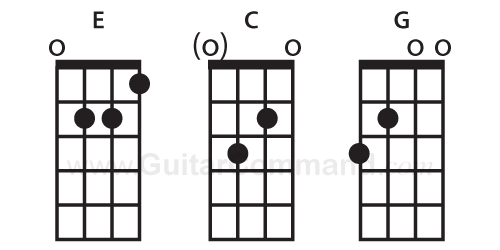
Major chords consist of the root, major third and perfect fifth notes. They produce a 'cheerful', open sound.
Open Position Minor Chords For Bass Guitar
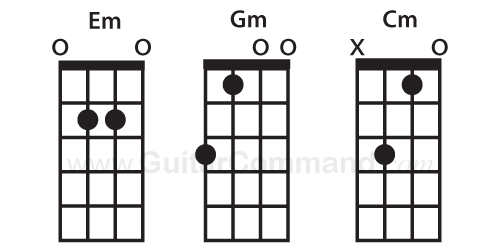
Minor chords contain the root, minor third and perfect fifth notes. They produce a 'sad' sound.
Open Position Dominant 7th Chords For Bass Guitar
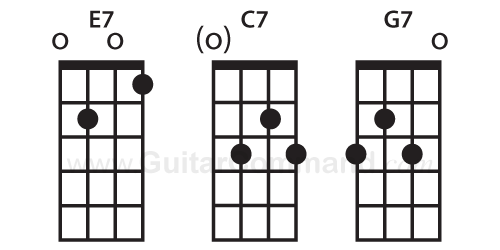
Dominant 7th chords produce an 'expectant' sound, and often resolve to the tonic chord. (See our guitar chord theory pages for an explanation.)
Open Position Minor 7th Chords For Bass Guitar
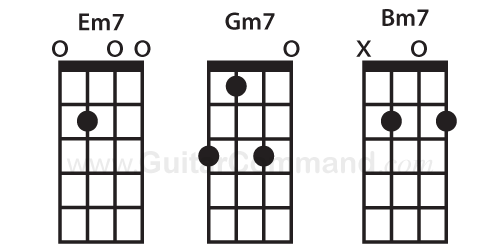
Minor 7th chords have an 'open', rather ambiguous sound. They are often used before a dominant 7th chord as the ii chord in a ii V I progression.
Movable Bass Chords
This is where things start to get interesting ...
Movable bass chords shapes can be moved up and down the neck of the instrument to play chords with different root notes.
For example, the same major chord shape can be used at one position to play an A major chord, and at another to play a C major chord.
On the following chord shapes, the root note is represented by a white circle. This should be positioned over the desired root note on the fretboard.
Want to know more bass chords, scales and arpeggios? Check out our 'Bass Guitar Scales, Chords & Arpeggios' book. It gives you the tools you need to create awesome bass lines and solos.
Movable Major Chord Shapes For Bass Guitar
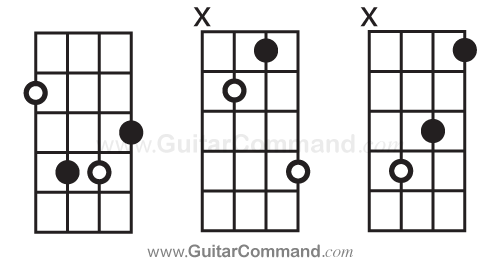
Movable Minor Chord Shapes For Bass Guitar
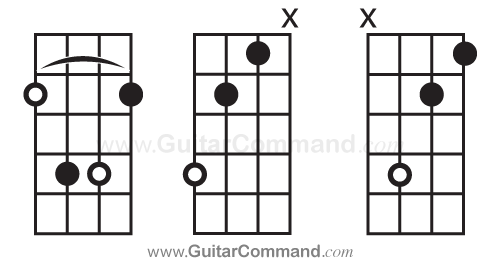
Movable Dominant 7 Shapes For Bass Guitar
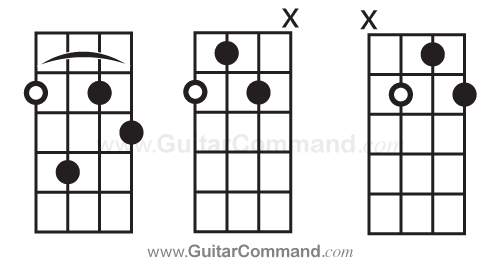
Movable Minor 7 Shapes For Bass Guitar
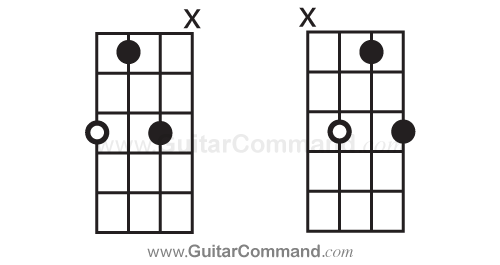
Major 7th Chord Shape For Bass Guitar
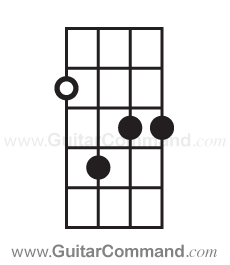
Bass Power Chords

Bass Diminished Chord Shape

Bass Augmented Chord Shape
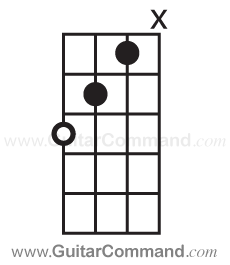
Bass Chord Playing Tips
Because frets get narrower the further up the fretboard you go, some movable chords are easier to play in higher positions.
Playing chords can be quite a strain at first, so take things slowly: it will get easier.
Bass chords can be played either with a pick or with the fingers. They can be strummed, or the notes in the chord can be played individually to create riffs and bass lines.
Read These Pages Next:
- Visit our comprehensive bass scales page here: Bass Scales.
- Check out our range of Bass Backing Tracks.

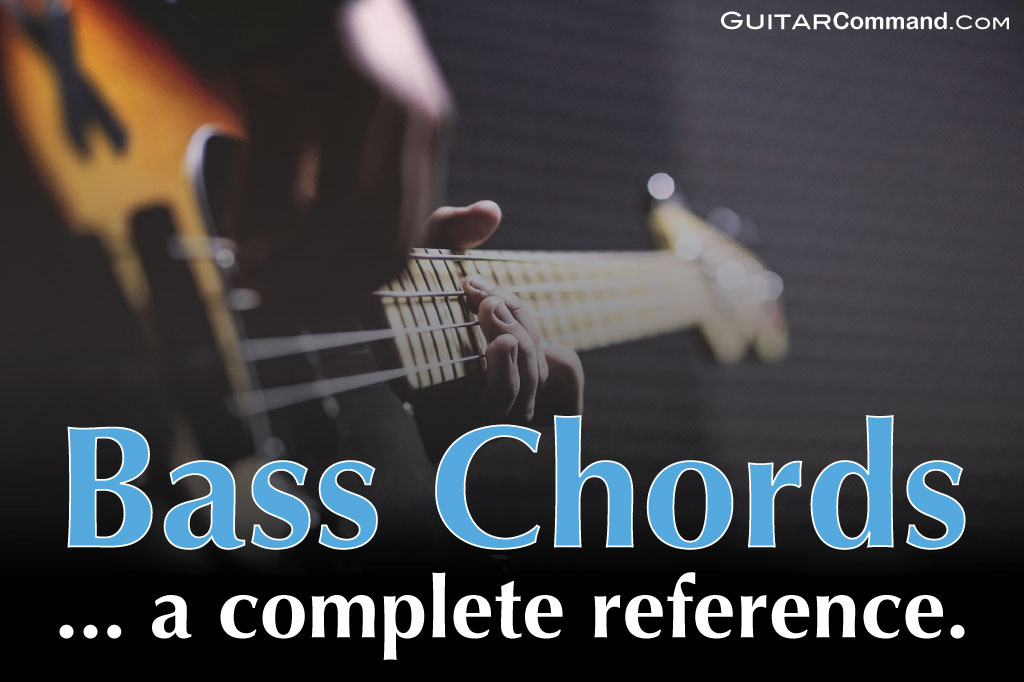


If you play them as arpeggios. What would be the string order for each chart above?
This information on chords is explained very well and really helps on learning. I would like to know if all the notes in a chord have to be played (only some of the notes), for example in the movable major chord shapes? I see on a guitar the notes are strummed together, but it’s different on bass? Thanks!
Hi Don,
Good question. You can either play all the notes at the same time by strumming them, or play the notes of a chord individually, creating an arpeggio effect. The shapes on this page are good for both techniques.
You can also omit notes from chords. Some notes have a greater effect on the overall sound than others; you’ll find out by playing around with the different chord shapes which they are.
I hope this helps!
Happy playing,
The Guitar Command Team
Very inspiring and educative. I have really learnt a lot. Please I still need more enlightenment on CHORD progression. Thanks
Hi sunnypeh,
Sorry, your comment somehow slipped through the net. It’s a good suggestion; we’ll include info on chord progressions in a future article.
Regards,
The Guitar Command Team
its complicated somehow!
Hi Barnabas,
Let us know if there’s anything in particular you’re having trouble with and we’ll be happy to help 🙂
Regards,
Guitar Command Admin
what are the arcs between two notes? (I see them on the first example in Dominant 7 and minor chords)
Good question.
The arcs signify a barre chord, i.e. when one finger is placed across the fretboard in order to fret more than one note at the same time.
You can find out more about barre chords on this page: Barre Chords (it’s aimed a guitarists, but the concept is the same).
Good luck with your playing,
The Guitar Command Team.
I still don’t know what all the covered frets mean?
Could someone explain it to me?
If I see four of them does that mean it’s a seventh chord or say a fifth chord with an octave?
Hi Nance,
The circles show you where to put your fingers. Once you’ve positioned your fingers on the bass neck as shown on the diagram, strum the strings to play the chord (avoiding strings marked with an X).
The number of circles doesn’t really have any bearing on the type of chord being played.
We hope this helps, but if you have any further questions, feel free to ask.
Regards,
The Guitar Command Team
This was really helpful. I’m new to bass and all this information is just great! Finally found what I was looking for. Thanks 😀
Hi, thanks for your comment, we’re glad you found the page useful! 🙂
Bookmarked!!! A page like this is a reference for those of us figuring things out on our own. Thank you for being there!
Hi John,
Thank you for your comment – we’re glad you found the page useful!
All the best with your playing!
Hi guys,
New to electric bass. About 8 months now.
Your material is really easy to understand. Many thanks for posting it
Hitting different chords has been a problem for me but
the way you present the process is very easily read and understood.
Thanks again
Hi Albert,
Thank you for your kind words, glad we could be of help!
Best of luck with your playing.
Regards,
Dan
Trying to help my man learn to play an electric 4 string bass guitar that was gifted to him by a friend right before he passed away.. Everything I’ve found until now has been way too complicated. Thanks so much! Exactly what I was looking for.
Thanks, Jeri.
Really appreciate your comment.
Hope it’s going well!
The Guitar Command Team
Great page, thanks dude!
Yep great page dude
do you have free downloadable bass guitar chords